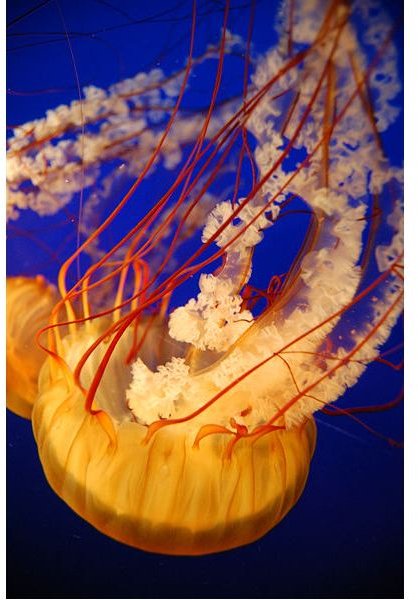Jellyfish Adaptations and How Jellyfish Survive in the Ocean
Jellyfish Adaptations and Composition
The jellyfish is named as such due to the jelly-like structure. It’s an umbrella shaped creatures that has significant adaptations to it’s ocean environment. These are visually fascinating creatures, some of which have their own bio-luminescence. There are varied jellyfish adaptations when it comes to their survival in their own environment.
Since it is mostly made up of water (90%), it can easily float in water. Due to their soft tissue they have to defend themselves from creatures that might try to consume them, that’s why they have nematocysts or stinging cells that are on their tentacles. Surprisingly, these very stinging cells can also keep the jellyfish warm in the cool depths of the ocean. There are approximately 200 species of jellyfish all of which have their own adaptations depending on the oceanic environment.
Their method of feeding can vary from one jellyfish to another, some use their tentacles to bring food to their mouth while others have a method of filter feeding which means they’ll eat whatever the current brings them. Other jellyfish actually take an active hunt in seeking prey and stinging them with their tentacles to immobilize them.
For movement, jellyfish use parts of their anatomy to make them mobile. They use their muscles that surround the perimeter of their U-shaped bell to contract and relax causing a swimming action making them move in said direction. Some prefer to float freely and passively within the currents.
Some jellyfish adaptations can help them survive in not only saltwater, but freshwater as well. They don’t have any complex digestive tract like humans or other animals, but just an area or cavity with a gastrodermal lining where nutrients can be absorbed. No real respiratory system is needed, because their thin skin can absorb gases very easily.
As far as a brain is concerned, they have none, just a simplified nervous system or more of a network of nerves that react to touch or when it comes into contact with something. They also have light sensing organs that help them differentiate between what’s up and what’s down.
Some jellyfish can live in extreme areas of temperature and salinity, but most exist in the warm and shallow waters of coastal areas. There are some jelly fish that can live as deep as 12,000 feet. They also tend to have symbiotic relationships with certain fish. This mean these fish are immune to jellyfish stings, thus being able to take refuge in the tentacles for baiting fish to provide food for the jellyfish.
Jellyfish as Far as the Eye Can See!
There is also the issue of jellyfish blooms. There are a lot of factors that cause these incidents of blooms depend on ocean currents, nutrients, oxygen, predation, and temperature. Apparently, these creatures can live in relatively high salinity areas and low oxygen waters more so than their competitors so they can thrive on plankton without having to compete. With saltier waters comes more iodine, which is a good source for jellyfish polyp production, and rising sea temperatures cause these blooms as well, because they are able to survive better than other sea animals in such conditions. This ability to survive in such inclement environmental conditions has allowed these blooms to propagate in areas of the ocean, and with the changes in the current environment, these blooms have become more prevalent.
References
https://www.lifeunderthesea.co.uk/id93.htm
https://www.jellyfishfacts.net/jellyfish-adaptations.html
https://tolweb.org/treehouses/?treehouse_id=4296
https://en.wikipedia.org/wiki/Jellyfish
Image Sources
Jellyfish. (Supplied by Anastasia Shesterinina at Wikimedia Commons; GNU Free Documentation License; https://upload.wikimedia.org/wikipedia/commons/d/d6/Chrysaora_quinquecirrha.JPG)
